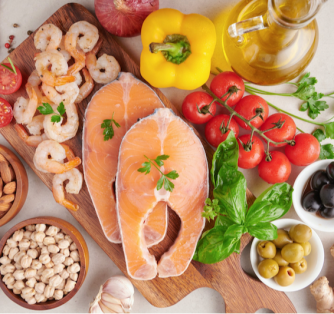Menu
Weight loss
Hormones
Sex
EXPLORE
MEET NU IMAGE MEDICAL
TREATMENTS
MEET NU IMAGE MEDICAL
TREATMENTS
MEET NU IMAGE MEDICAL
Should You Weigh Food Before Or After Cooking?


When gearing up for your weight loss plans, you often get many recipes for healthy cooking, or need to track your calories. However, the question becomes should you weigh your food before or after cooking?
It is recommended to weigh food before cooking because cooked foods are often lighter due to the loss of moisture. It is easier to accurately measure ingredients when they are in their raw form.
Also, when measuring ingredients for recipes, it is best to weigh food before cooking to ensure accuracy. Otherwise, the amount of ingredients may be off and the recipe will not turn out as desired.
What Are The Benefits Of Weighing Your Food?
Below are some of the benefits of weighing your food before cooking.
1. Improved portion control: Monitoring your food intake can help you achieve healthier portion sizes and control your calorie intake.
2. Better calorie tracking: Weighing your food can help you accurately count calories and ensure you are eating enough to meet your goals.
3. Improved nutrient tracking: Weighing your food can help you make sure you’re getting enough of the vitamins and minerals you need to stay healthy.
4. Easier meal planning: Weighing your food can help you plan meals and snacks ahead of time and make sure you’re getting the nutrients you need.
5. Enhanced weight management: Weighing your food can help you better manage your weight by making sure you’re eating the right amounts of food for your goals.
Tips on Using a Food Scale to Weigh Your Food
You probably have to use a food scale to accurately measure your food down to ounces or grams to accurately track your calories compare to using cups or spoons
Here are some tips on how to use a food scale to weigh your food the right way with as much accuracy
1. Measure on a flat, stable surface. Place the food scale on a flat, stable surface like a countertop or table. This will help ensure an accurate weight measurement.
2. Zero out the scale. Before you place the food on the scale, make sure to zero out the scale. This will help ensure the most accurate weight measurement.
3. Measure in grams. Use the grams setting when measuring food to get the most accurate weight measurement.
4. Place the food on the scale. Place the food on the scale and make sure it is on a flat, stable surface.
5. Read the weight. Read the weight on the food scale and make sure it is the correct weight.
6. Measure multiple times. Measure the food multiple times to ensure accuracy.
Raw Food vs. Cooked Food
Raw food is typically more nutritious than cooked food because it contains vitamins, minerals and other nutrients in their natural state. Raw food is also often more flavorful because it has not been subjected to the high temperatures that can diminish flavor. However, cooked food can also be more nutritious than raw food because the cooking process breaks down cell walls, which can make it easier for the body to absorb the nutrients. Additionally, some foods are more nutritious when cooked, such as tomatoes, which contain more of the antioxidant lycopene when cooked. Ultimately, the nutrition of both raw and cooked food depends on the particular food and the cooking method used.
Counting Calories or Tracking Macronutrients
Tracking macronutrients is a more effective way to reach your health and fitness goals than counting calories. The reason for this is that macronutrients give you more information about the types of foods you are consuming, while calories only provide a basic measure of the energy content of a food. By tracking macronutrients, you can more accurately assess the quality of the foods you are eating and make sure that you are getting the right balance of proteins, carbohydrates, and fats in your diet. Additionally, tracking macronutrients can help you better understand how your body responds to different types of foods, allowing you to make more informed decisions about your dietary choices.
How to Get Started Tracking Macronutrients
Tracking macronutrients or macros as it is commonly called, can be overwhelming, especially if it is your first time. Below are 6 ways to get started.
1. Calculate Your Macros. The first step in tracking macronutrients is to calculate your macros. This includes determining your daily calorie needs and then calculating the ideal macronutrient ratio for your body and lifestyle.
2. Track Your Food Intake. Once you know your macros, the next step is to start tracking your food intake. This can be done through a food tracking app like MyFitnessPal, or with a simple pen and paper.
3. Set Goals. After you have been tracking your food intake for a while, you may want to set some goals. This could be to lose weight, gain muscle, or just to maintain your current body weight.
4. Monitor Progress. Once you have set your goals, the next step is to monitor your progress. This can be done by tracking your weight, body fat percentage, and other measurements.
5. Tweak and Adjust. As you track your progress, you may need to make adjustments to your macro ratios and calorie intake. This can be done by adjusting your macros and/or calorie intake accordingly.
6. Enjoy the Journey. The last step in tracking macronutrients is to enjoy the journey. Try to stay consistent with your tracking
This article is for informational purposes only and does not constitute medical advice. The information contained herein is not a substitute for and should never be relied upon for professional medical advice. Always talk to your physician about the risks and benefits of any treatment. Nu Image Medical may not offer the medications or services mentioned in this article.
